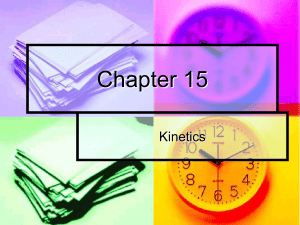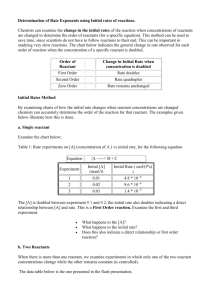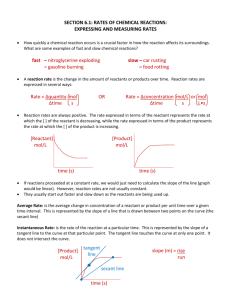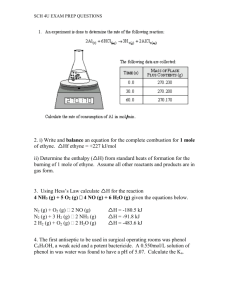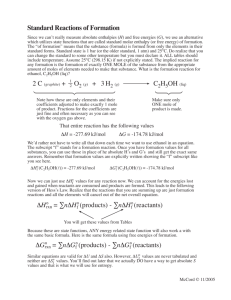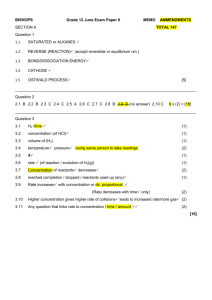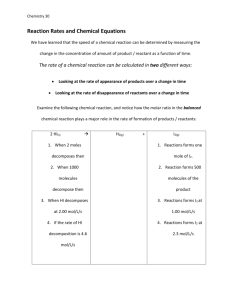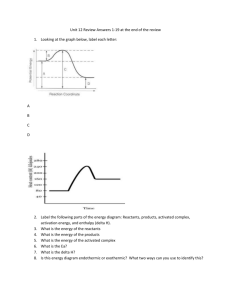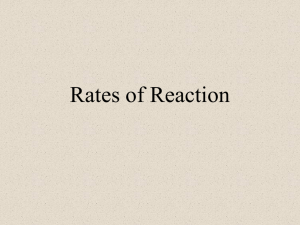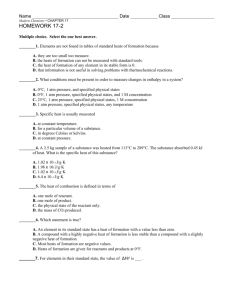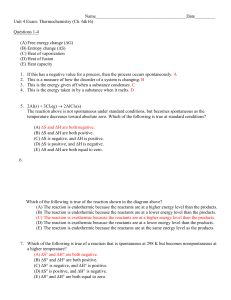Rate Laws and Order of Reaction Notes
advertisement
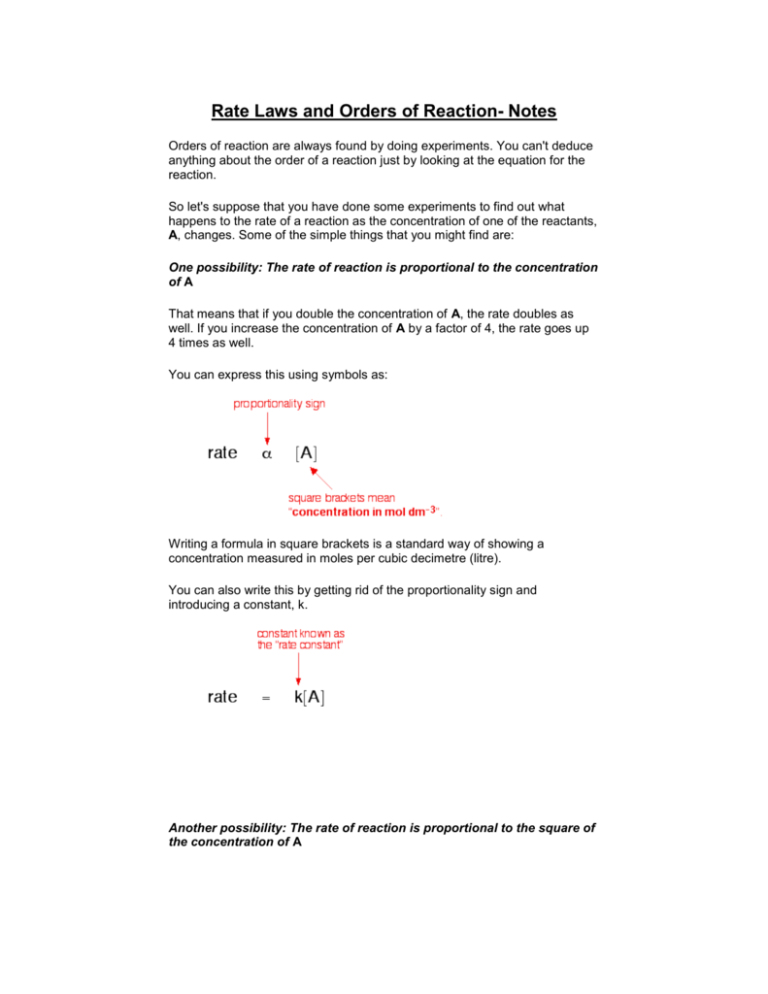
Rate Laws and Orders of Reaction- Notes Orders of reaction are always found by doing experiments. You can't deduce anything about the order of a reaction just by looking at the equation for the reaction. So let's suppose that you have done some experiments to find out what happens to the rate of a reaction as the concentration of one of the reactants, A, changes. Some of the simple things that you might find are: One possibility: The rate of reaction is proportional to the concentration of A That means that if you double the concentration of A, the rate doubles as well. If you increase the concentration of A by a factor of 4, the rate goes up 4 times as well. You can express this using symbols as: Writing a formula in square brackets is a standard way of showing a concentration measured in moles per cubic decimetre (litre). You can also write this by getting rid of the proportionality sign and introducing a constant, k. Another possibility: The rate of reaction is proportional to the square of the concentration of A This means that if you doubled the concentration of A, the rate would go up 4 times (22). If you tripled the concentration of A, the rate would increase 9 times (32). In symbol terms: Generalizing this By doing experiments involving a reaction between A and B, you would find that the rate of the reaction was related to the concentrations of A and B in this way: This is called the rate equation for the reaction. The concentrations of A and B have to be raised to some power to show how they affect the rate of the reaction. These powers are called the orders of reaction with respect to A and B. For our purposes, the orders of reaction you are likely to meet will be 0, 1 or 2. But other values are possible including fractional ones like 1.53, for example. If the order of reaction with respect to A is 0 (zero), this means that the concentration of A doesn't affect the rate of reaction. Mathematically, any number raised to the power of zero (x0) is equal to 1. That means that that particular term disappears from the rate equation. The overall order of the reaction is found by adding up the individual orders. For example, if the reaction is first order with respect to both A and B (a = 1 and b = 1), the overall order is 2. We call this an overall second order reaction. Some examples Each of these examples involves a reaction between A and B, and each rate equation comes from doing some experiments to find out how the concentrations of A and B affect the rate of reaction. Example 1: In this case, the order of reaction with respect to both A and B is 1. The overall order of reaction is 2 - found by adding up the individual orders. Note: Where the order is 1 with respect to one of the reactants, the "1" isn't written into the equation. [A] means [A]1. Example 2: This reaction is zero order with respect to A because the concentration of A doesn't affect the rate of the reaction. The order with respect to B is 2 - it's a second order reaction with respect to B. The reaction is also second order overall (because 0 + 2 = 2). Example 3: This reaction is first order with respect to A and zero order with respect to B, because the concentration of B doesn't affect the rate of the reaction. The reaction is first order overall (because 1 + 0 = 1). What if you have some other number of reactants? It doesn't matter how many reactants there are. The concentration of each reactant will occur in the rate equation, raised to some power. Those powers are the individual orders of reaction. The overall order of the reaction is found by adding them all up. The rate constant Surprisingly, the rate constant isn't actually a true constant! It varies, for example, if you change the temperature of the reaction, add a catalyst, or change the catalyst. The rate constant is constant for a given reaction only if all you are changing is the concentration of the reactants. You will find more about the effect of temperature and catalysts on the rate constant in your university chemistry studies. Summary Chart How Rates Depend on Concentration Change and Order of Reaction Order or Reaction Concentration Change X 1 X 2 X 3 0 10 = 1 20 = 1 30 = 1 1 11 = 1 21 = 2 31 = 3 2 12 = 1 22 = 4 32 = 9 3 13 = 1 23 = 8 3 3 = 27 Example For the reaction A B, the following data was obtained: Trial 1 2 3 Initial [A] mol/L 0.10 0.20 0.30 Initial Rate mol/L * s 5 10 15 The order describes how the rate is affected by changing concentrations of reactions. In the above example, when initial concentration is doubled, the rate correspondingly doubles, so the rate for the data above is rate = k[A]x, where x = 1. If when the concentration doubled, the rate increased by 4 (2 2) times, then it would be a second order reaction, and x would = 2. Rate Law Expression Practice Problem For the reaction, NO2(g) + CO(g) → NO(g) + CO2(g), the following data was obtained. Determine the overall rate law for this reaction. What is the rate constant (k) for this reaction? Trial 1 2 3 Initial rate (mol/L⋅s) 0.0050 0.080 0.0050 Initial [NO2] (mol/L) 0.10 0.40 0.10 Initial [CO] (mol/L) 0.10 0.10 0.20
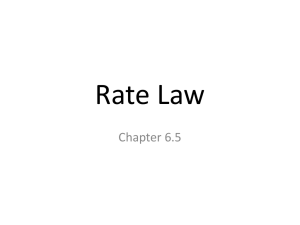
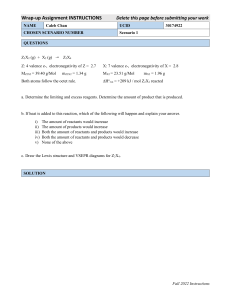
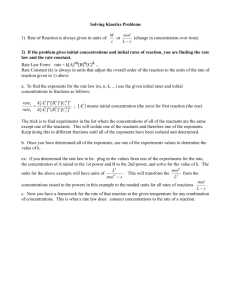
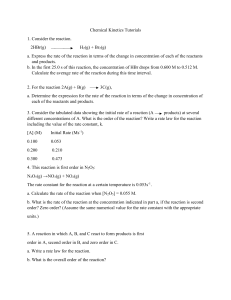
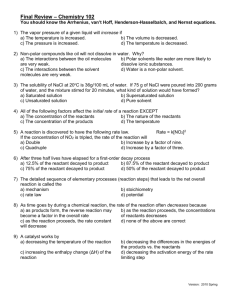
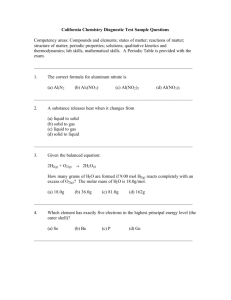
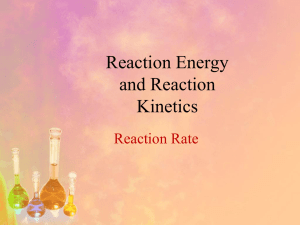
![[SO2]2[O2] [SO3]2 524.4K• 462.9K• 8.314 J mol•K • ln125.4 61.5K](http://s3.studylib.net/store/data/008432217_1-f6f0ddc631a0ec89f84a5e786b3339ef-300x300.png)
